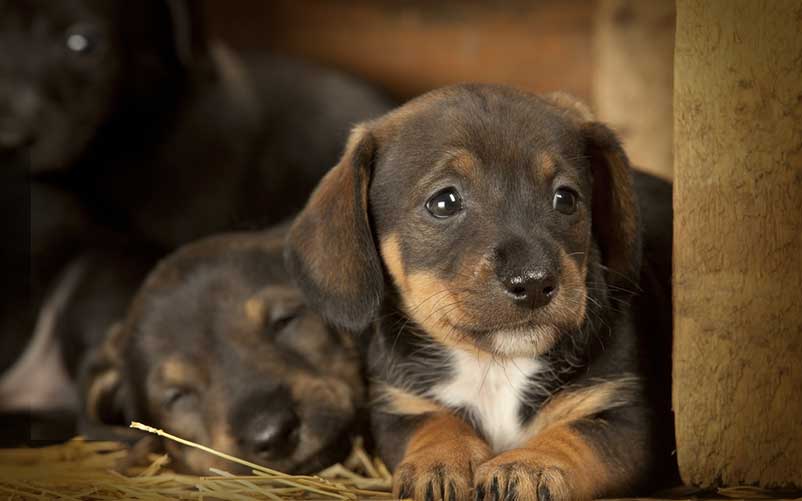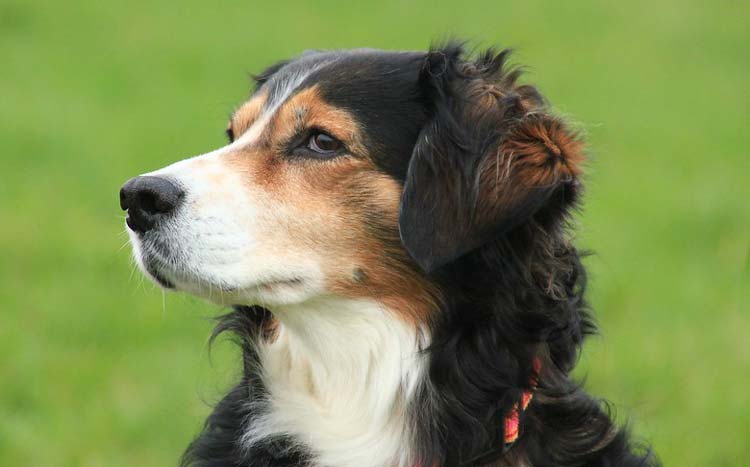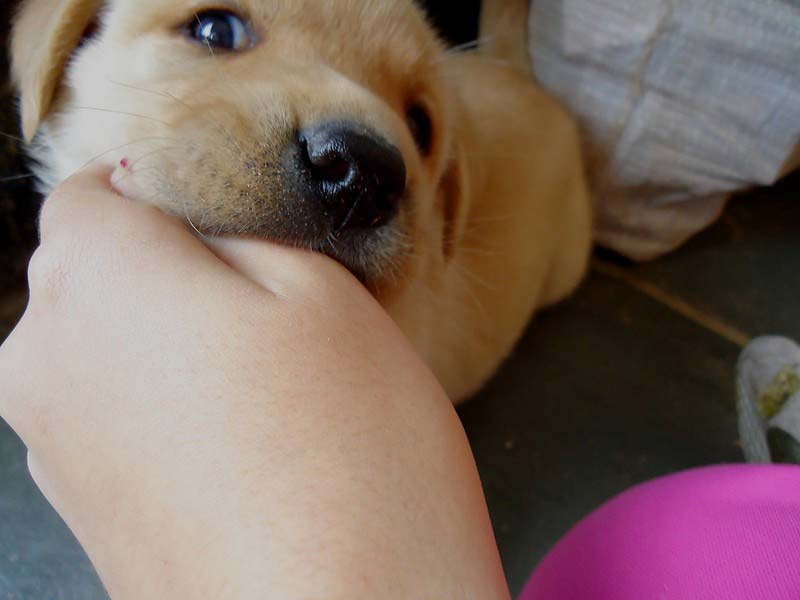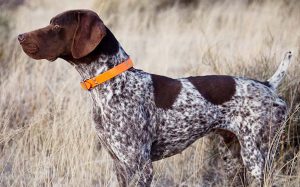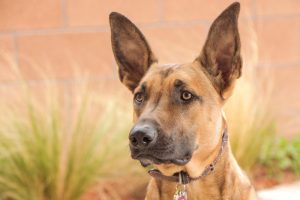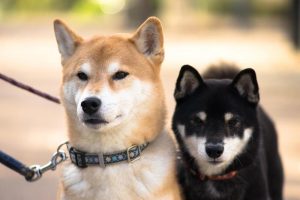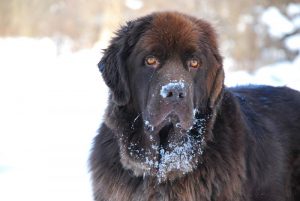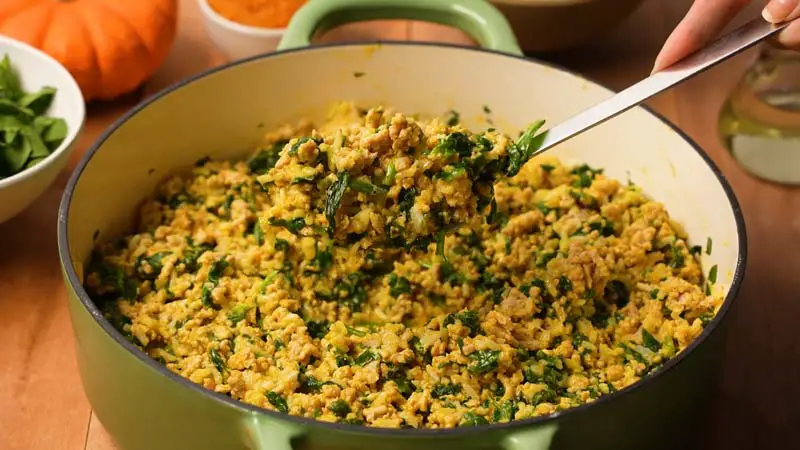
Page Contents
When should you feed your dog chicken and rice?
A chicken and rice diet is typically recommended by veterinarians if something is wrong with your dog. This is a basic diet that will help them get the nutrients they need without too much digestive upset. Feeding rice and chicken to your dog is an appetite booster to help them get back to their eating habits.
Considered a bland diet for most pet experts and vets, the combination of chicken and rice provides a basic meal that your dog will easily digest without a lot of problems. This is especially helpful for canine breeds that typically lean on having a sensitive tummy by nature.
Chicken is a basic protein source while rice is also a basic carbohydrate source. Combining them gives your dog a simple yet effective diet for their daily needs – without too much fat. Chicken and rice are often given to dogs with digestive upsets or if they have food allergies.
See also:
Benefits of chicken and rice for your dog
So, what are the benefits of feeding chicken and rice to your dog? Here are some of them:
1. Easy to digest
Chicken and rice meals are great for dogs with digestive problems. That’s because they only contain a single protein source (chicken) and carbohydrate source (white rice). Just make sure that the rice is plain and white while the chicken should be deboned and as lean as possible.
Brown rice might be okay for some dogs, but if your canine friend is sick and has digestive issues, it’s best to feed them white rice instead to avoid constipation. If your dog still gets constipated if you feed them with chicken and rice (which happens rarely), try feeding them only the chicken in the meantime.
2. Helps in returning your dog’s appetite
A combination of rice and chicken will help in stimulating your dog’s appetite. Chicken is usually flavorful and enough to get your dog’s eating habits back on track. Vets typically and generally recommend chicken and rice as a dog’s temporary diet if they are having a low appetite due to sickness.
Any kind of meat is always a good taste for dogs – chicken included. By putting together chicken and rice, your dog will get back on track once you’ve fed them with something basic yet filled with enough protein and carbohydrates to help them eat normally again.
3. Used in elimination diets
Dogs that are on an elimination diet to know which foods they are sensitive to (or get allergies from) will benefit from a chicken and rice diet, which is usually recommended by the vet in this case. This is why chicken and rice should only be fed for about 2 to 3 days and not for a long time.
How much chicken and rice to feed a dog by weight?
Rice and chicken should be given sparingly depending on the weight of your dog so that they don’t overeat and get obese. Typically, rice and chicken tend to be higher in terms of calories compared to regular dog food. Expect about 350 to 400 calories per cup of chicken and rice.
Most dogs need 25 to 30 calories from food per pound in weight in one day. However, this is not a one-size-fits-all rule because all dogs are different – especially with the variety of breeds, age of the dog, metabolism rates, daily activities, energy levels, and the like.
If your dog is a senior, you’ll want to give them less of the chicken and rice because they tend to digest their food slower compared to younger dogs. This will give them fewer calories, which will make them healthier and less prone to obesity and other health issues.
Chicken and Rice for Dogs by Weight Chart
So, how much chicken and rice should you feed your dog daily? As mentioned above, it depends on the dog’s weight – all breeds have varying weight ranges, as well as metabolism rates. Here’s a weight chart to help you figure out the amount of chicken and rice to give to your dog:
| Weight of your dog (in pounds) | 10 – 20 | 30 – 40 | 50 – 60 | 70 – 80 |
| Recommended cups of chicken and rice per day | ¾ to 1 ½ cups | 2 ¼ to 3 cups | 3 ¾ to 4 ½ cups | 5 ¼ to 6 cups |
Although we made the feeding chart above, you should only use this as a rough guide for your dog. The amount of chicken and rice might vary depending on other factors, such as the following:
1. Your dog’s age
Older dogs require fewer calories while younger ones need more. That’s because a senior dog doesn’t have the same metabolism rate as a pup or an adult (further explained below). Therefore, it’s better to feed a senior dog with fewer cups of chicken and rice than adults and pups.
You also want to check:
How to take care of a 6 week old puppy
How Much to Feed a Rottweiler Puppy
How Much to Feed a Husky Puppy
2. Activity levels
If your dog is typically running around all day or has an active lifestyle, they will need more carbohydrates and protein in their diet. This is when you’ll need to feed your dog more to avoid weight imbalance that leads to other health issues, as well as a lack of energy.
On the flip side, if your dog lounges all day and doesn’t do a lot of physical activity, we recommend feeding them less than usual because feeding them with too many calories will likely result in obesity if they don’t burn them by running around or playing fetch.
3. Vet recommendation
Your veterinarian might also recommend a specific amount of chicken and rice in cups depending on their diagnosis of your canine friend. Underlying illnesses, allergic reactions, and other health concerns will be taken into consideration by your vet when recommending food portioning for your dog.
4. Your dog’s metabolism
As mentioned above, older dogs digest food slower than youngsters. Aside from that, some breeds also have a higher metabolism than others so it pays to know more about the breed if they can digest food faster than others.
Too many calories in your dog’s system will cause obesity and other health problems such as hip and elbow dysplasia. If your dog breed has a risk of such joint-related problems, it’s best to keep their weight in check and only feed them a fair amount of chicken and rice – especially if they aren’t too active.
Can I Feed My Dog Chicken & Rice Every Day?
No, vets generally do not recommend feeding your dog strictly on chicken and rice every single day. The only exceptions to giving chicken and rice for extended days are dogs that are in surgery recovery or an elimination diet could be advised to eat the chicken and rice much longer.
A chicken and rice diet without anything else is typically recommended by veterinarians only for 2 to 3 days. Here are some reasons why:
1. Nutritional imbalance
The reason why you shouldn’t feed them only chicken and rice is that dogs will lack nutrients that they need, which can be obtained from other food sources aside from chicken and rice.
Veggies and red meat (e.g. beef, lamb, venison, and pork) have additional nutrients that will help your dog become healthier, so it should be part of their diet somehow.
2. They can get tired of the same food
Your dog could also get sick and tired of the same food – they will not always enjoy chicken and rice. If you want your dog to get back to their regular food, you may have to ask your vet when they can get off the chicken and rice diet.
3. They could develop food allergies
Chicken and rice, if eaten successively, can make your dog get food allergies to it. Any food that you give to your dog in excess will not be good for their health overall, which is why you’ll need to ask your veterinarian about the right amount and type of food and how long you can feed it.
When switching back to their regular food, don’t just hand them the old food right away. Instead, use portioning to make the transition gradual so that they won’t get digestive upsets. Put a little bit of the old food and slowly increase the amount with every meal.
Can you feed your dog chicken bones, feet, neck, livers, and wings?
While we said above that chicken should be ground and deboned, you might also wonder: is it safe to feed them bones and other chicken products? Let’s go over each part to help you know more about whether to feed them to your dog or not.
Chicken bones
Generally, cooked chicken bones should not be given to your dog (no matter what the cartoons and movies say) but if it is a raw bone, it should be fine. The only problem with cooked chicken bones is that it becomes fragile and could cause injuries to your dog if they break into splinters.
Instead of cooking the chicken bones, separate them from the meat and hand them to your dog raw. Make sure that the chicken bones are dehydrated before serving to your dog. Raw chicken bones are safe and easy to digest because they won’t break into splinters.
Chicken feet
Are chicken feet safe for dog consumption? Yes, chicken feet can be safely digested by your dog since they are only made with cartilage and some tissue, as well as some chicken skin. Fun fact: chicken feet contain glucosamine and chondroitin, which is good for the joints.
If your dog is a canine breed that’s prone to joint problems, chicken feet are good to add to their diet. These will help lessen the likelihood of developing hip and elbow dysplasia, as well as other similar joint problems. What’s more, the texture of chicken feet will help clean your dog’s teeth naturally.
For dogs that are difficult to get into a brushing habit, you can send them some chicken feet in place. Chicken feet are natural tartar removers and are also tasty treats that will strengthen their teeth and gums eventually. Just make sure the chicken feet are dehydrated when you serve them to your dog.
Chicken neck
As with any bones or bony parts, chicken necks can be fed to your dog but they need to be dehydrated or dried first. As much as possible, it’s best not to cook them to avoid making them sharp and splintery when your dog consumes the chicken neck.
Just like chicken feet, if your dog eats chicken necks, they will also get stronger teeth and gums eventually so it’s a good alternative to brushing. If you aren’t sure about feeding your dog with anything raw, consider slow-cooking the chicken neck instead.
Chicken liver
As with most internal organs, chicken liver is safe and also healthy for your dog to eat. Chicken liver contains iron and copper for blood health, fatty acids for healthier skin and coat, and zinc plus other antioxidants to help your dog maintain a healthy immune system.
Chicken wings
A chicken wing is also considered safe for your dog to consume. That’s because it won’t be a choking hazard regardless of breed size. You can give your dog chicken wings tips in a variety of ways and they provide sufficient amounts of protein and healthy fats.
However, we prefer giving dogs raw chicken wings instead of being cooked. This will help prevent the likelihood of splinters from the small bones that could result in choking hazards or indigestion.
Homemade Chicken and Rice Recipe
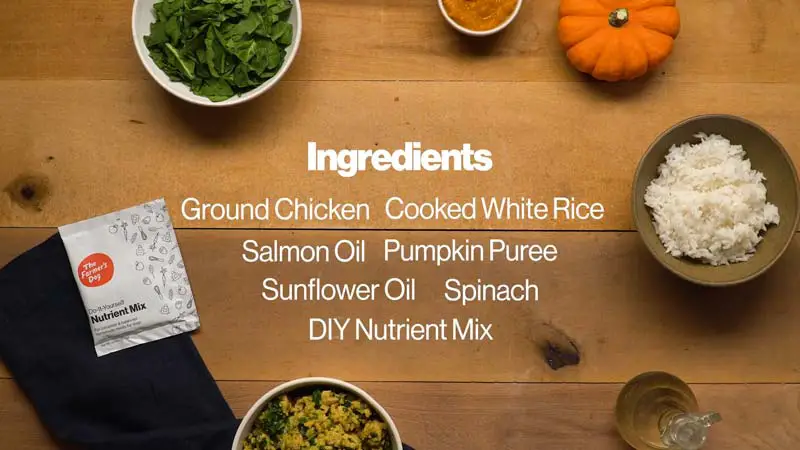
Although plain boiled chicken breasts that are deboned, combined with white rice, is the typical chicken and rice recipe, you may also want to try something more flavorful without being too harsh on your dog’s diet. If you want a homemade chicken and rice recipe, here’s what you’ll need:
Ingredients
- 2 cups of white rice, cooked
- 3 pounds of white chicken, deboned and ground
- 5 teaspoons of sunflower oil
- Spinach (9 cups of fresh, 1-2/3 cups if frozen)
- 2 cups of pumpkin puree
- 1.5 teaspoons of salmon oil
- nutrient mix (as advised by your vet)
Kitchen Equipment
- wooden spatula
- big pot
- kitchen thermometer
- bowls
Procedure
1. In a big pot, pour the sunflower oil and the white chicken. Mix it thoroughly and cook.
2. Pour the pumpkin puree over the mixed chicken and sunflower oil. Do not mix yet.
3. Add the white rice and spinach over the pumpkin puree.
4. Mix everything until the spinach is wilted.
5. Add salmon oil over the chicken and rice. Mix everything thoroughly.
6. Use a kitchen thermometer to measure the temperature of the food. It should be cooked until it reaches 165 degrees Fahrenheit (73.8 degrees Celsius)
7. Take out the pot from the cooker to cool down. You may add a nutrient mix as advised by your veterinarian. Mix all of the ingredients.
8. Portion the chicken and rice recipe depending on your dog’s diet and vet advice. Store a day’s worth of food in the fridge and put the others in your freezer.
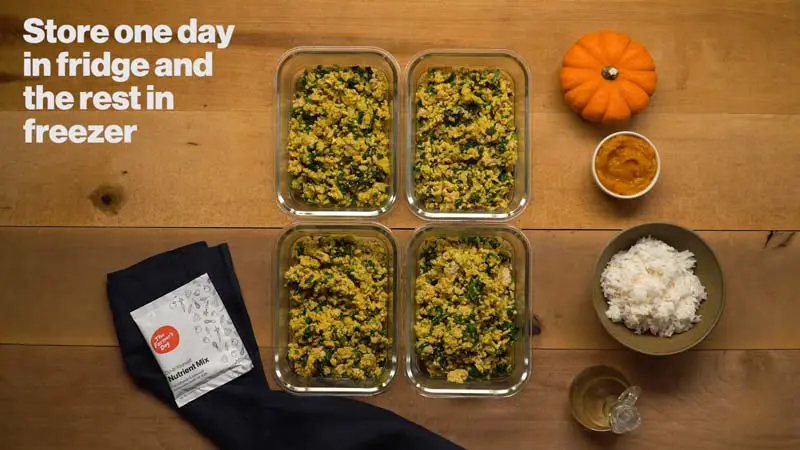
Commercial Dog Food
If you simply don’t have enough time to prepare chicken and rice for your dog, don’t worry – we have some commercial alternatives just for you:
Wholehearted Active Performance Chicken & Rice Recipe
Suitable for medium to large dog breeds of all life stages, the Wholehearted Active Performance Chicken & Rice Recipe Dry Dog Food contains chicken as the first ingredient, with 30% protein and 20% fat. Aside from that, it has glucosamine and chondroitin sulfate, which will help strengthen your dog’s joints.
It also has other nutrients, such as vitamin A for healthy eyes, calcium for bones, vitamin E for healthy skin, and others. As the name implies, this chicken and rice recipe is suited for dogs that are often active with their owners – whether running around the yard or serving as a working dog.
Since it doesn’t contain any wheat or corn, this rice and chicken combination commercial food will benefit your dog if they have sensitive tummies. Aside from that, it even has probiotics to help with their digestive system. Each pack contains 45 lbs. of dry dog food but you can also select smaller sizes.
Purina Pro Plan Chicken & Rice Formula Puppy Food
Another commercial dog food in our list – for those who need to give chicken and rice to their young canine friend – is the Purina Pro Plan Chicken & Rice Formula. It has calcium and phosphorus for your puppy’s bones and teeth, as well as immune-boosting antioxidants.
Suitable for large breed puppies, the chicken and rice combination has DHA from fish oil, which helps in brain development and eye health. What’s more, it has glucosamine for stronger joints – perfect for breeds that are prone to hip and elbow dysplasia.
With no artificial flavors or colors, this puppy food has chicken and rice, as well as other vitamins (E, B-3, A, and others) and minerals (zinc, calcium, iron, and others) to maintain a balanced diet for your dog. The crunchy kibble texture will also help improve your puppy’s appetite while strengthening its teeth.
Dave’s Restricted Bland Chicken & Rice Canned Dog Food
For those that have been recommended by their vet to have their dog on a strict no-filler, no-flavor, and basic diet, why not try the Dave’s Restricted Bland Chicken & Rice Canned Dog Food? Manufactured in Utah, USA, this quality dog food is a mix of chicken and rice with no gluten or wheat.
Ideal for senior dogs, this simple yet effective dog food contains 13.2 ounces of digestible chicken and rice that’s suitable for dogs on a restricted diet (as the name implies). It can also be given to puppies in small amounts.
This dog food also works for canines that are on a limited ingredient diet or tend to have difficult food allergies. It has only a couple of vitamins and minerals other than the chicken and rice, such as vitamins B12, A, D3, E, and minerals like calcium and zinc.
Q&A
It depends on the situation, but generally, your dog shouldn’t be given just chicken and rice for more than 3 days or as advised by your vet. Doing so will only make your dog unhealthy as they will lack the nutrients that come from red meat, veggies, fruits, and the like.
As mentioned above, constantly eating only chicken and rice might also make them develop allergies to such food. Therefore, it’s best to ask your vet when they can switch back to regular food and keep the meals varied so that it’s balanced for your dog.
It depends on what you mean by “human chicken”, since typically, we eat our chicken cooked to avoid getting a bad stomach. Dogs have a different digestive system that allows them to eat raw food just fine (though it still varies per dog) so “human chicken” might be okay, but with exceptions.
Chicken that is given to dogs and mixed with rice can be cooked but it should be separately made for them. As mentioned above, we advise owners to leave the bones uncooked and separate to avoid splinters potentially injuring their dog.
Yes, chicken and rice are typically used as a meal served for dogs with digestive upsets. Your vet might recommend your dog to go on a strict chicken and rice diet for about 2 to 3 days until they’ve returned to their peak condition.
White rice is good for sensitive stomachs, unlike brown rice, since it has less fiber. Chicken breast without the skin and the bones, when boiled, is also good for diarrhea and other digestive upsets. Combine these two ingredients and you have dog food for stomach relief.
It depends on the amount of rice and/or chicken in the diet, or how long you have been feeding them with such a recipe. As mentioned above, if you constantly feed your dog anything, which, in this case, chicken and rice, they could develop allergies to it.
Diarrhea can happen if your dog becomes suddenly allergic to chicken and rice due to eating it all the time. What’s more, some dogs may also develop gluten sensitivity, which means that they could also get diarrhea from consuming too much rice.
Both chicken and lamb are good sources of protein. However, if your dog has chicken allergies, you might want to consider switching to lamb and rice instead. With that said, both of these protein sources are okay for dogs and can be safely combined with white rice.
Chicken is good for strengthening their joints and bones due to the presence of glucosamine and omega fatty acids. Lamb, on the other hand, is a type of red meat that can be a good source of B-vitamins for the nervous system and can strengthen their muscles with linoleic acid.
No, chicken and rice meals don’t cause your dog to get constipated, which is why many vets advise the pet owners to put them on this diet if they have digestive upsets. If you give them the right recipe as stated by your vet, your dog won’t have trouble with bowel movement.
As long as you’ve given them the combination of white rice and white chicken meat (with the bones removed), your dog should be fine. Only brown rice can cause difficult poop passing for canines. If your dog does get constipated, however, try removing the rice.
You might be a little bit concerned or alarmed if your dog poop turns yellow once they started consuming chicken and rice as their temporary diet. However, this will eventually change back to normal once the chicken and rice diet is finally over.
The yellow color is due to the presence of chicken and is commonly seen if your dog also tries other forms of poultry, such as duck or turkey. If you are still concerned, try asking your vet for more information. The consistency, frequency, and odor of the poop might also indicate other health issues.
Yes, chicken and rice can be safely combined with vegetables, but you should still hear out the advice of your vet on how much they should consume, how often, and any other dietary changes. With that said, veggies help add a bit more vitamins and nutrients to their daily meals.
As mentioned above, chicken and rice shouldn’t be a daily meal. Instead, try to serve your dog with other types of food, such as red meat, and then combine it with vegetables. This will ensure that your dog gets all kinds of nutrients for improving its health.



